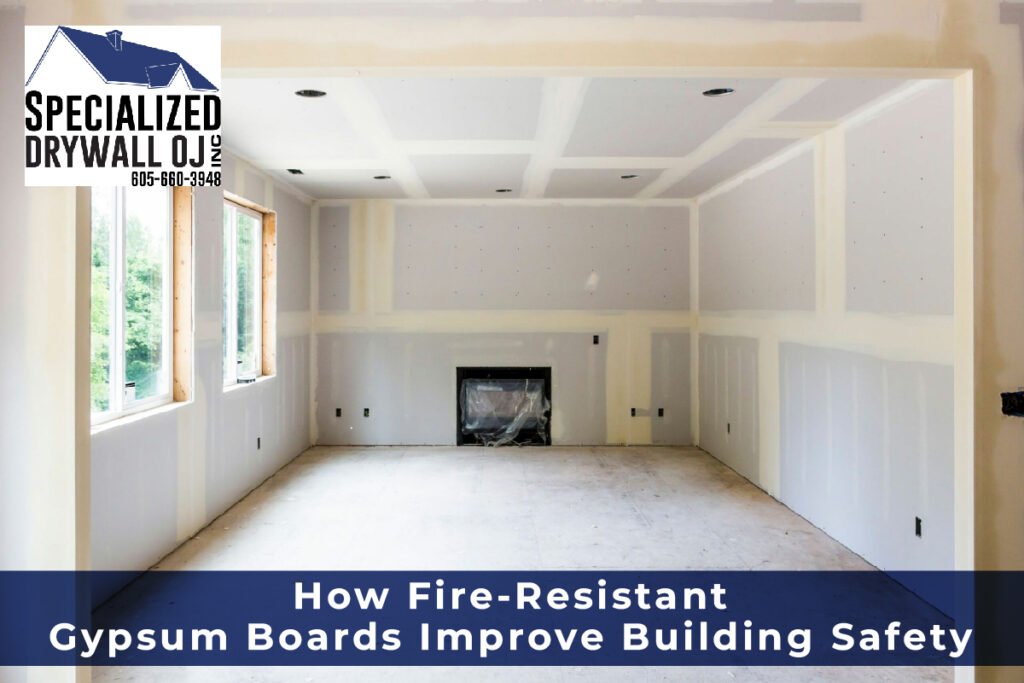When it comes to modern construction, safety is no longer optional—it’s essential. In today’s world, fire protection isn’t just a building code requirement; it’s a critical step in safeguarding lives and property. Whether you’re designing a high-rise, outfitting a commercial space, or renovating your home, using fire-rated materials can make all the difference. One such game-changer? Fire-resistant gypsum boards.
You’ve likely heard of them, especially if you’ve worked with drywall. But beyond the name, what do these boards offer? Spoiler alert: they bring more to the table than just fire resistance. This post will guide you through everything from types of fire-rated drywall to real-world benefits, cost considerations, and installation tips. If you’re serious about building safety, stick around—this could be the smartest move you make for your project.

What Exactly Is a Fire-Resistant Gypsum Board?
Fire-resistant gypsum board—also known as fire-rated drywall—is a specially designed panel made with a non-combustible gypsum core and glass fibers. These boards are engineered to resist flames and high temperatures longer than standard drywall.
The secret lies in the board’s composition. Traditional gypsum drywall already has fire-resistant properties due to the water molecules in gypsum. But with added materials like fiberglass and increased core density, fire-rated boards like Type X gypsum board and Type C gypsum board offer superior fire protection.
Meet the Fireproof Warriors: Type X vs. Type C Gypsum Board
When selecting fire-resistant drywall, the two main types to know are Type X and Type C.
- Type X Gypsum Board: This is the industry standard for fire resistance. It typically offers one hour of fire resistance and includes glass fibers for added strength. You’ll often find it in walls, ceilings, and separation barriers in residential and commercial buildings.
- Type C Gypsum Board: Considered the upgraded version of Type X, Type C offers improved fire resistance, sometimes up to two hours. It has a higher concentration of glass fibers and other additives that help maintain board integrity under extreme heat.
Both types meet rigorous safety standards and are essential fire-rated gypsum board panels used in high-risk zones like stairwells, corridors, and mechanical rooms.
Real-World Benefits of Fire-Resistant Drywall Installation
Let’s talk benefits—not just theory, but practical reasons why fire-resistant drywall installation is a smart move.
- Extended Escape Time: By delaying the spread of flames and smoke, these boards buy crucial minutes during a fire emergency. That can mean the difference between life and death.
- Structural Integrity: While flames consume wood and standard drywall quickly, fire-rated panels help maintain wall strength longer, giving occupants and firefighters more time.
- Insurance Perks: Some insurance providers offer lower premiums for buildings with enhanced fire protection measures, including the use of fire-rated gypsum board panels.
- Peace of Mind: Whether you’re a builder or a homeowner, knowing your structure is safer brings undeniable comfort.
Where You Should Be Using Fire-Rated Drywall
Not every wall in your home needs fire resistance, but key areas certainly do. Here’s where fire-resistant gypsum board shines:
- Garage Walls and Ceilings
- Furnace and Utility Rooms
- Apartment and Condo Walls (between units)
- Commercial Kitchens
- Exit Routes and Stairwells
Each of these areas is a high-risk zone where fire could spread quickly. Installing fire-rated drywall in these spots not only complies with code but also enhances overall building safety.
Professional Installation vs. DIY: What Should You Choose?
Installing fire rated gypsum board panels requires more than just a few screws and a utility knife. The precision involved in sealing joints, aligning sheets, and avoiding gaps means this is one project where professional help goes a long way.
For homeowners who still want to try DIY, make sure to:
- Use the correct fasteners and spacing
- Properly seal all joints with fire-rated joint compound
- Avoid shortcuts that can compromise the fire resistance rating
Need help? Get expert drywall services from Specialized Drywall OJ Inc’s gypsum board experts.
Long-Term Maintenance Tips to Keep It Fire-Ready
You’ve installed it—great! But like all safety features, fire-rated drywall needs occasional checks to remain effective.
Maintenance must include:
- Inspect for cracks, holes, or water damage
- Reseal joints that may have shifted or weakened
- Ensure renovations or wall modifications don’t compromise the fire barrier
This level of attention ensures your safety investment stays intact for years to come.
Going Green? Fire-Rated Drywall Can Help
You might not expect it, but many fire-resistant gypsum boards are made with recycled materials and support LEED (Leadership in Energy and Environmental Design) certifications. So not only are you protecting your building—you’re also protecting the planet.
Choosing sustainable fire-rated drywall panels can earn you green building credits while offering top-notch fire protection. Now that’s a win-win.
Final Thoughts: Build Safer, Smarter, and Stronger
Fire-resistant gypsum boards are one of the most underrated safety features in construction today. They’re more than just code requirements—they’re a proactive way to protect lives, assets, and the future of your property.
Whether you’re upgrading a home or leading a commercial build, it pays to prioritize fire safety from the start. And when you’re ready to make the switch, turn to Specialized Drywall OJ Inc.—your trusted partner for expert drywall solutions.
FAQs
Q1: Is Type X gypsum board enough for residential use?
Yes. For most homes, Type X gypsum board provides sufficient fire resistance for garages, utility rooms, and shared walls.
Q2: Can I paint over fire-rated drywall?
Absolutely! Just be sure to use compatible primers and paints that won’t compromise its integrity.
Q3: Is fire-resistant gypsum board waterproof?
Not necessarily. While it resists heat, you’ll need a moisture-resistant board for areas like bathrooms. Check out our best gypsum boards for wet areas for more info.
Q4: Does installation affect fire rating?
Yes. Improper installation can reduce the board’s effectiveness. Always follow manufacturer guidelines or hire pros.
Q5: Are there any building codes requiring fire-rated drywall?
Yes. Most local and national building codes require it in specific areas. Always verify with your local code authority.

